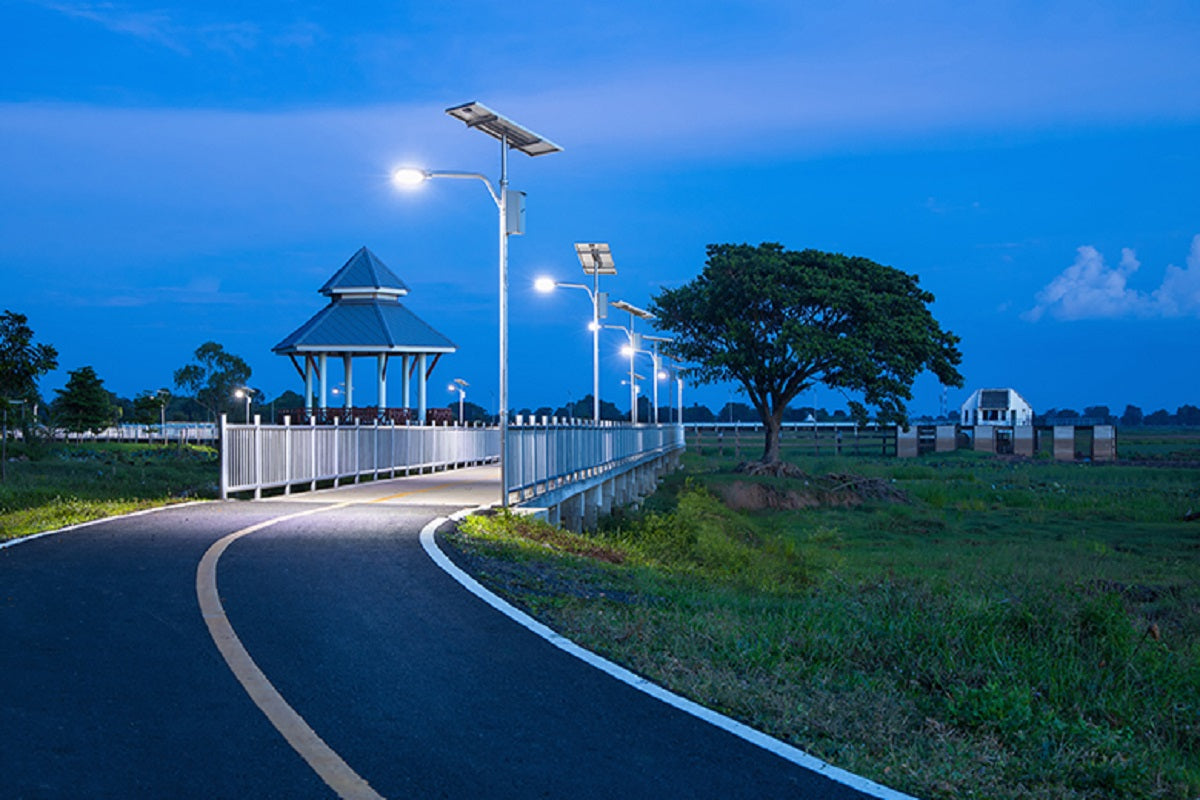Ⅰ. Introduction
As the world embraces more environmentally friendly alternatives, solar LED street lights have emerged as a game changer in outdoor illumination. These revolutionary lighting systems capture the sun's energy, giving a dependable and cost-effective alternative to regular street lights. In this detailed study, we will look at the benefits of solar LED street lights, installation procedures, and the most recent advances in this quickly expanding technology.

Ⅱ. The Rise of Solar LED Street Lights
Solar LED street lights have grown in popularity in recent years, thanks to their considerable advantages over traditional lighting options. These lights are powered by solar panels, which turn sunshine into electricity, eliminating the need for grid-based power sources. This not only lowers energy expenses, but it also reduces the carbon impact associated with outdoor lighting.
Ⅲ. Benefits of Solar LED Street Lights
1. Energy Efficiency: LED technology, when paired with solar electricity, provides unprecedented energy efficiency. Solar LED street lights use far less energy than typical street lights, resulting in significant cost savings over time.
2. Environmental Sustainability: By using renewable solar energy, these lights help to create a greener, more sustainable future. They lower greenhouse gas emissions and help to alleviate the environmental impact of outdoor lighting systems.
3. Low Maintenance: Solar LED street lights require less maintenance than traditional street lights. These lights provide a convenient and cost-effective alternative because they do not require complex wiring systems or regular bulb changes.
4. Versatility: Solar LED street lights can be installed in remote regions where grid power is either unavailable or impractical. This makes them an excellent solution for rural villages, parks, and other off-grid environments.
Ⅳ. Installation and Components
The installation process for solar LED street lights is pretty simple. These systems typically include the following components:
1. Solar Panels: Photovoltaic (PV) panels catch sunlight and convert it into electrical energy, which is then stored in batteries for use at night.
2. Batteries: Rechargeable batteries retain the energy generated by the solar panels during the day, providing a continuous and dependable power source to the LED lights at night.
3. LED Luminaires: High-efficiency LED luminaires produce brilliant, uniform illumination while using very little energy.
4. Mounting System: Solar LED street lights are often mounted on poles or structures, with solar panels incorporated into the design to maximize sun exposure.
Ⅴ. Choosing the Right Solar LED Street Light
When choosing solar LED street lights, it is critical to evaluate the desired brightness (measured in lumens), coverage area, and autonomy (the number of days the system can function without sunlight). In addition, weather conditions, location, and installation requirements should all be considered to achieve best performance.
Ⅵ. Advancements and Future Prospects
The solar LED street light business is constantly evolving, as manufacturers introduce new features and technologies to improve performance and efficiency. Some of the most recent advancements include:
1. Smart Lighting Controls: Integrating motion sensors, dimming capabilities, and remote monitoring systems enables more efficient energy management and personalized lighting solutions.
2. Improved Battery Technology: Advanced battery technologies, such as lithium-ion batteries, provide more energy storage capacity and longer lifespans.
3. Integrated Design: Manufacturers are looking at elegant, integrated designs that combine solar panels, batteries, and LED luminaires into a single unit, easing installation and maintenance.

Ⅶ. Conclusion
Solar LED street lights are a key step toward a more environmentally friendly and energy-efficient future. These lighting solutions combine the power of solar energy with the efficiency of LED technology, providing several benefits such as cost savings, environmental sustainability, and low maintenance requirements. As technology advances, solar LED street lights will become the primary alternative for outdoor lighting in urban, rural, and off-grid locations. Adopting this new technology not only illuminates our streets, but also lays the way for a brighter, more sustainable future.
Ⅷ. FAQ
1. Are solar street lights any good?
Despite their drawbacks, solar street lights can be a great option for outdoor lighting solutions. They offer significant energy and cost savings, as well as improved safety and easy installation.
2. How long do solar street lights last?
A solar street light's lifespan varies based on a number of factors, including component quality, maintenance procedures, and ambient conditions. On average, a well-designed and well-maintained solar street light can last 10 to 20 years.
3. What are the disadvantages of solar panel street lights?
Solar street lights have several advantages, including their low cost, dependability, and convenience of installation. However, they have some drawbacks, like being weather-dependent, having limited brightness, and requiring upkeep.

